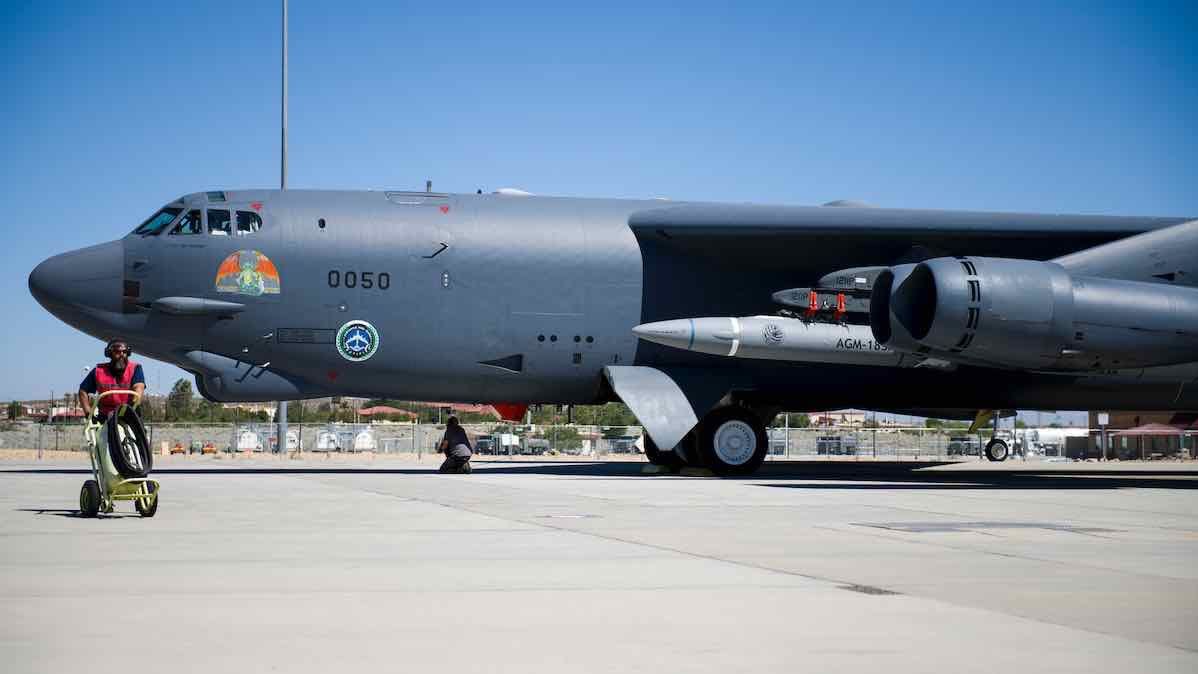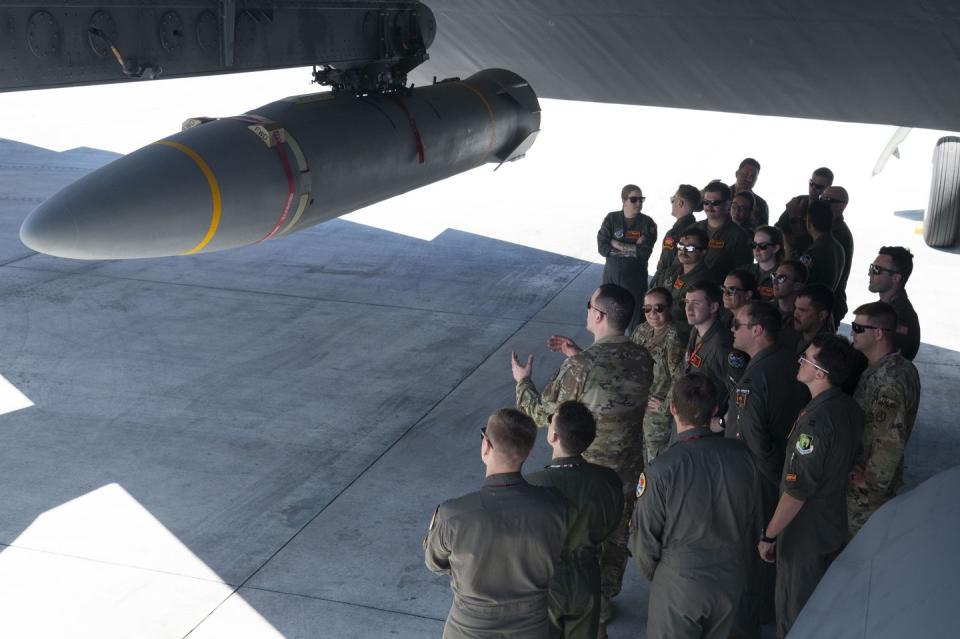America’s Secret Hypersonic Weapon Is About to Stun the Pacific

Signs point to the U.S. Air Force conducting an important hypersonic weapon test in the Pacific.
A B-52 bomber armed with a live ARRW missile was photographed on Guam this week.
ARRW was canceled last year, but there are so few hypersonic weapon tests that any test is useful.
A U.S. Air Force B-52 bomber was photographed last week on Guam with an interesting sidekick: a live AGM-183A Air-Launched Rapid Response Weapon (ARRW). The bomber is believed to be involved in a secret final test of the weapon that may even have already taken place. The ARRW was one of several Mach 5+ weapon systems pursued by the Pentagon, and although recently canceled, the Department of Defense is finishing testing anyway to grab whatever data it can on the performance of so-called hypersonic weapons.
Guam to “Kwaj”
In the coming days, the #USAF will conduct a new ARRW/AGM-183A hypersonic glide vehicle (HGV) test in the Pacific. It seems it aims at simulating an operational mission of a B-52H bomber taking off from Guam, flying ~4000 km before releasing a live weapon... https://t.co/WIEMG9rg9z pic.twitter.com/we06N6wAlB
— M51.4ever (@M51_4ever) March 3, 2024
Indications that a test might be forthcoming appeared on social media and in the Air Force’s media stream over the weekend. The Defense Visual Information Service published several photos of a B-52H Stratofortress heavy strategic bomber carrying a live ARRW missile. The bomber was located at Andersen Air Force Base on the U.S. territory of Guam in the Pacific. As one observer on social media noted above, similar photos were taken at Edwards Air Force Base in 2023 before a similar test.
In addition to the photos, another social media user on Twitter (above) pieced together several Notices to Airmen and Navigation Warnings in the vicinity of Kwajalein Atoll. Notices to Airmen, also known as NOTAMs, are meant to temporarily keep civilian aircraft out of a described area for a particular amount of time, such as a missile test. Navigation warnings, or NAVWARNs, similarly apply to sailors, commercial shipping, and private shipping. Together, the NOTAM and NAVWARNs issued cover not only the projected flight path of a missile from the launch point to Kwajalein Atoll, but the flight areas of special aircraft that would monitor the test—particularly the launch and terminal impact phases.
Kwajalein Atoll is a U.S. government test site in the Marshall Islands—an independent country. The atoll supported several atmospheric nuclear tests in the 1950s, and is now part of the Ronald Reagan Ballistic Missile Defense Test Site. Today, the atoll is used as a bullseye for a variety of missile tests, particularly Minuteman III missiles launched from Vandenberg Air Force Base in California.
Broken Arrow

The AGM-183A ARRW was one of several hypersonic missile programs that the U.S. government initiated after Russian and Chinese programs were publicized in the mid-2010s. The ARRW was designed as a high speed conventional missile that could quickly take out mobile and other time-sensitive targets. In 2018, Flight Global claimed that the weapon reaches speeds of up to Mach 20, or 15,345 miles an hour.
ARRW suffered from developmental issues, including a number of failed tests. The Air Force canceled the missile in 2023, but made the decision to carry out the last two tests and launch the final two developmental missiles. Hypersonic, high mach atmospheric flight is a relatively under-researched field, and the more data, the better. While hypersonic flight was first achieved in the late 1950s, and today’s ballistic missiles re-enter the atmosphere at Mach 18, new hypersonic weapons fly at high mach numbers entirely in the atmosphere. This subjects them to incredible levels of friction and pressure that were, until recently, not fully understood.

After ARRW’s cancellation, the Air Force forged ahead instead with the Hypersonic Attack Cruise Missile (HACM). In 2023, Air Force Secretary Frank Kendall compared the two weapons, and stated HACM was “compatible with more of our aircraft and it will give us more combat capability overall” than ARRW. HACM is a smaller missile that can be carried by fighter jets, while ARRW was so large it could only be carried by bombers. HACM is also believed to have a shorter range, owing to its smaller size. This also suggests that a bomber can carry more HACMs than ARRWs, enabling a single plane to attack more targets in wartime.
Waiting for a Test
Although there are clear signs and portents of an ARRW test, nobody outside of the U.S. government knows when it will take place… or if it’s already happened. The Air Force typically announces tests within 72 hours of their taking place, so we are within the envelope of a test that took place earlier in the week. If it hasn’t happened yet, the clock is ticking—the NOTAMs and NAVWARNs both have expiration dates.
You Might Also Like

